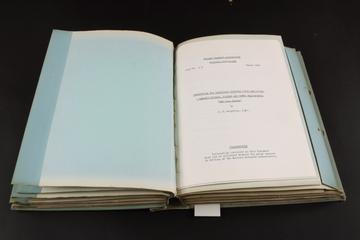
Mullard Limited
Mullard Limited was initially founded as the Mullard Radio Valve Company by Captain Stanley Robert Mullard. The new company was financed by the Radio Communication Co in order to compete with Marconi, especially in the field of maritime radio, and its valves were soon adopted for use by the Admiralty. The business was boosted by the beginning of broadcasting in the UK during the early 1920s and would go onto form Mullard Wireless Service Co to market the valves in produced. Despite this by 1924 the company was in need of additional capital as well as additional technical resources, in part to meet the demands of the newly formed BBC, and as result Mullard sold half the company to Philips. As part of this Philips established a UK based subsidiary, Philips Electrical which held its shares in Mullard, and in 1925 Mullard was register as a private company. In 1927 Philips acquired the rest of the company and in 1929 Captain Mullard stepped down as managing director of both it and the Mullard Wireless Service Co.
Following the departure of its founder the company continued to expand, beginning production of cathode ray tubes in 1936, opening new production facilities and in 1938 acquiring E.K. Cole Ltd, until the Second World War. During the war Mullard was considered a foreign owned company and, although it produced a large number of conventional valve designs, it was not part of any government funded research projects, such as those into microwave frequencies. Partly as a result of this, and partly due to a lack of a coherent UK research facility, born from a reliance on Philips’ Eindhoven facility, the company formed the Mullard Research Laboratories in 1946. This new facility replaced the existing structure of fragmented laboratories in each of the production facilities and would therefore allow the company to participate in research projects that received funding from the British Government. At the same time Philips had a reorganisation of its subsidiaries and Mullard became a wholly owned subsidiary of Philips Electrical Industries Limited which in turn was a subsidiary of Philips.
By 1951 the company’s products had expanded beyond the valves it originally produced and in order to reflect this its name was changed to Mullard Limited. At around the same time the company also began to produce its first transistors, which would eventually be produced at their own facility in Southampton, and took over the running of British Tungsram, another Philips owned company. Along with this expansion in 1957 Mullard also helped to set up the Mullard Radio Astronomy Observatory. Throughout this period the production of transistors had continued to grow, with new models being introduced in 1953, and by 1960 Mullard produced 75% of all British semiconductors, by volume, as well as a number of other electronics components. In 1962 the company formed a joint venture with GEC, Associated Semiconductor Manufacturers, in order to combine development and production, mostly of transistors, but this only lasted until 1969 when GEC pulled out. Expansion continued through the rest of the 1960s, with the Mullard Space Science Laboratory being opened in 1966 and increased production capacity, with one factory producing one million colour television tubes by 1968.
Despite the success enjoyed during the 1960s, by the 1970s Mullard began to suffer some difficulties, with factories being closed in 1972, 1975 and 1979, and production being cut back in other areas. In 1977 the Mullard Research Laboratory was renamed the Philips Research Laboratory. Despite further factory closures in the 1980s Mullard also began to produce teletext decoders and video discs for the Philips laser disk system.
Philips continued to use the Mullard name until 1988 when the subsidiary’s name was changed to Philips Components Limited. The semiconductor facilities were transferred to Philips Semiconductors, later NXP Semiconductors, with the Southampton site closing.